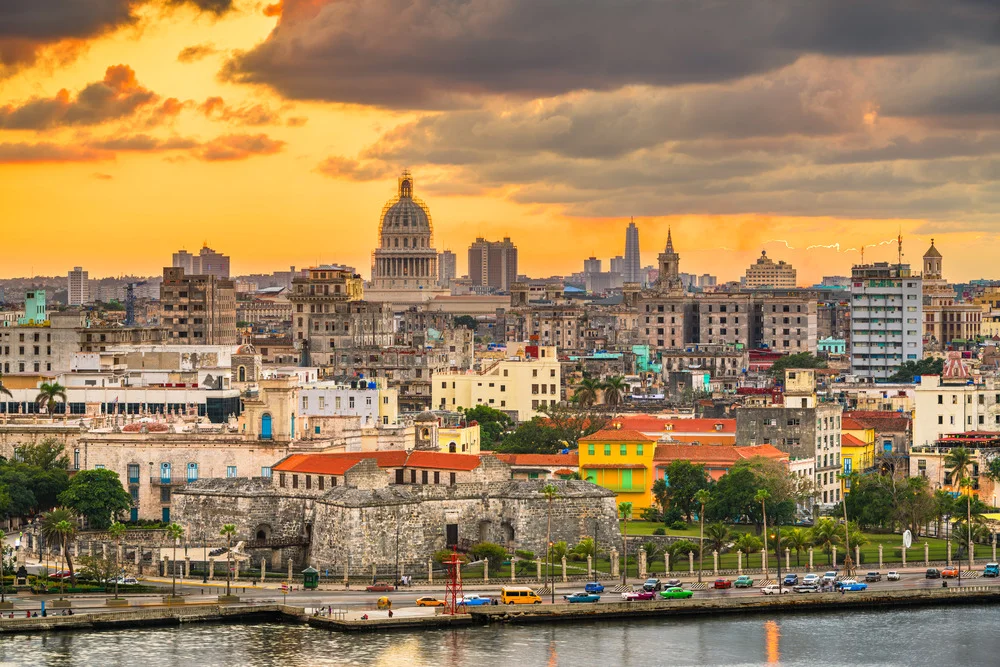Imagine yourself in the vibrant city of Havana, Cuba, where history, culture, and adventure intertwine. A 5 day Havana itinerary will allow you to fully immerse in this captivating destination.
You’ll explore the iconic neighborhoods of Old Havana and Centro Havana, visit the famous Plaza de la Revolución, and experience the best of what this incredible city has to offer during your Havana trip.
This Cuba trip itinerary is designed to make the most of your 5-day stay, with helpful Havana travel tips to ensure a smooth and enjoyable journey.
From discovering the city’s rich history and architecture to indulging in its vibrant arts and nightlife scene, this guide will take you through a detailed plan for an unforgettable Havana experience.
You’ll learn how to get to Havana, what essentials to pack, and how to navigate the city with ease. Get ready to embark on a journey filled with culture, cuisine, and the warm hospitality of the Cuban people.
How to Get to Havana
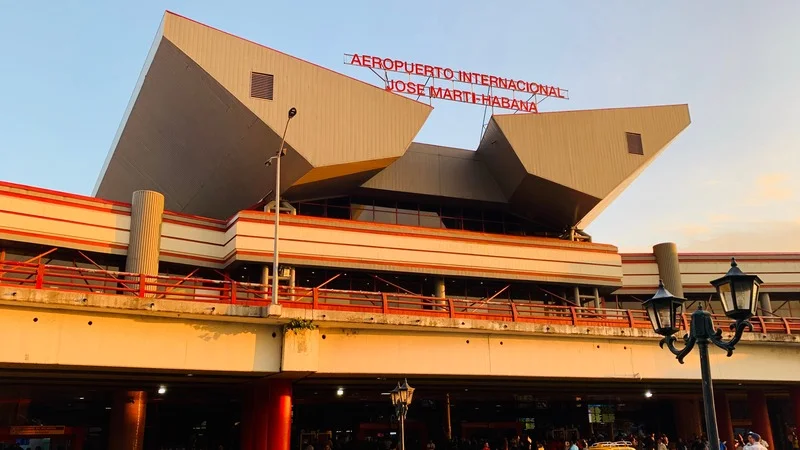
Havana is easily accessible by air, with direct flights available from many international destinations.
To enter Cuba, a visa or tourist card is required, which can be purchased at the check-in counter from airlines like Delta for USD$50. When traveling from the U.S., choose from 11 travel categories, such as “Support for the Cuban people.”
Before your trip, complete the online immigration form (D’Viajeros) in advance to save time at the airport. U.S. citizens must apply for a travel license under one of 12 approved categories, with “support for the Cuban people” being the most popular.
To qualify, stay in casa particulares (locally run guesthouses), visit Cuban-owned businesses, go on tours run by Cubans, and engage in cultural activities like dance and music classes.
Once you arrive at Havana’s José Martí International Airport, you can take the Transtur Havana shuttle bus to the city for around US$10.
Keep in mind that American credit and debit cards will not work in Cuba, so bring enough cash for your entire trip, including a contingency fund.
When following a 5 day Havana itinerary, it’s recommended to exchange your money at a local Cadeca upon arrival at the airport. This will ensure you have the local currency readily available for your trip.
Additionally, consider packing any snacks or foods you may want to have during your stay, as Havana may not offer familiar snacks readily available to tourists.
Travel Essentials

When traveling to Havana, it is important to be prepared with the right essentials. Here are some key items to pack for your trip:
- Cash: Credit cards and ATMs are not reliable for foreigners in Cuba. Bring enough cash to cover your expenses for the entire trip.
- Passport and Cuban Tourist Visa: Make sure your passport is valid for at least two weeks beyond your stay. You will also need a Cuban Tourist Visa, which can be supplied by your travel agent or airline.
- Travel Insurance: Cuba requires all visitors to have proof of comprehensive travel insurance. Some credit cards offer complimentary insurance, so check with your provider.
- Clothing: Pack lightweight, versatile clothing suitable for hot weather. Bring a light jacket or sweater for cooler evenings, and smart casual clothes for evening events. Don’t forget swimwear, sunhats, and comfortable shoes for walking.
- Toiletries and Medications: Essential items like sunscreen, mosquito repellent, hand sanitizer, and toilet tissues may be hard to find in Cuba. Pack all the toiletries and medications you need, including prescription drugs in their original containers.
- Electronics: Bring a cell phone and charger, camera, and any other necessary electronics. A VPN (Virtual Private Network) can be useful for accessing the internet securely. Be aware that electricity in Cuba is mainly 220 AC, so bring a 220 to 110 European adapter if needed.
Other useful items to consider packing include:
- Snacks like power bars, dried fruit, and beef jerky
- A filtered water bottle to avoid drinking tap water
- A detailed laminated map or offline map application (like Maps.me)
- An ETECSA card for WIFI access
- Small gifts like school supplies, toiletries, or sports equipment to donate to locals
Remember to exchange your money for Cuban Convertible Pesos (CUC) upon arrival, as this is the primary currency used by tourists. Be mindful of local customs and etiquette, such as tipping and greetings.
With these essentials packed and a respectful attitude, you’ll be well-prepared for an unforgettable journey in Havana.
Getting Around Havana
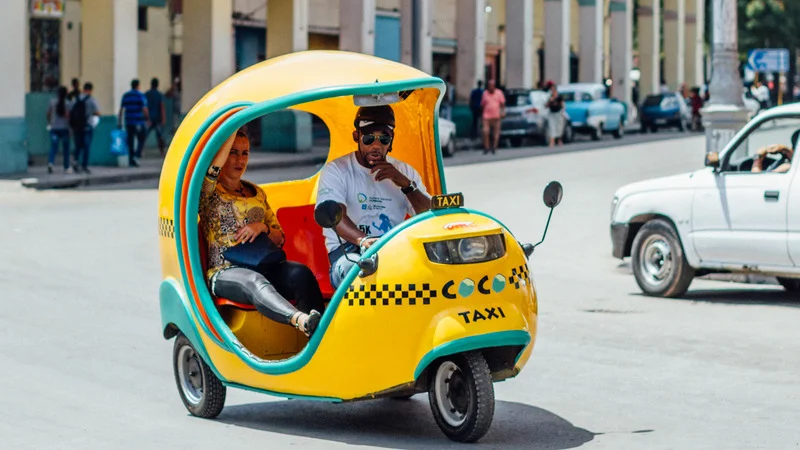
Havana offers a variety of transportation options for getting around the city. One of the most popular and unique experiences is taking a classic car tour.
These meticulously restored vintage American cars can be hired with a driver for a few hours to explore the city’s main sights. A half-hour ride in a 1956 blue Chevy convertible is a great way to appreciate Havana’s tropical beauty.
For a more affordable option, visitors can use government taxis, which cost around 25 CUC per person. Private taxis, usually Russian Ladas, are generally cheaper but less luxurious, lacking air conditioning and seatbelts.
Cubataxis, modern yellow cars with meters, are more expensive but offer a comfortable ride. Almendrones, or shared taxis, are another option, typically in old American cars with fixed routes.
Public transportation in Havana includes:
- Metro Buses (Guas-Guas): Run along 17 routes, connecting central Havana with the suburbs. Cost is roughly US$0.40.
- Minibuses (Taxis Ruteros): Operate on additional routes in central Havana, with slightly higher fares.
- Hop-On, Hop-Off Bus (Havana Bus Tour): Runs on two main routes, with T1 covering tourist sights and T3 going to Playas del Este beaches.
- Boat Service: Shuttles passengers across the city’s harbor to Regla or Casablanca every 15-20 minutes for around US$0.40.
For a more active approach, walking is a great way to explore Havana, especially in the pedestrian-only historic core of Habana Vieja. Rental bikes are also available from reputable companies like RutaBikes, which offers guided tours.
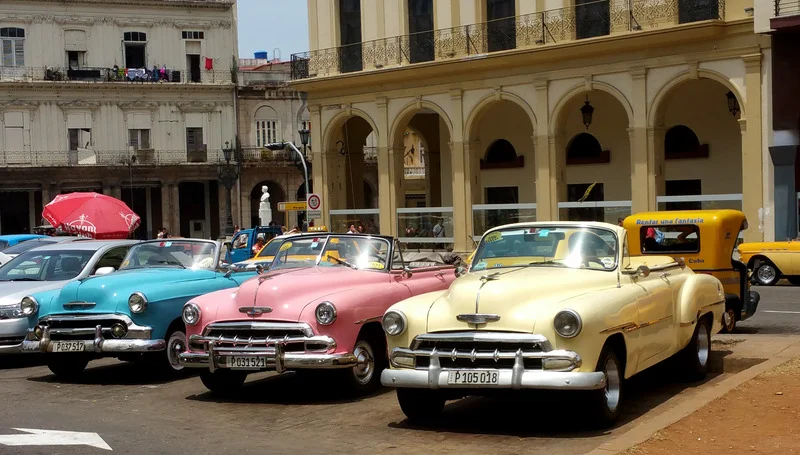
Bici-taxis, three-wheeled bicycle rickshaws, ply short inner-city routes in Habana Vieja for US$1 to $2 per ride.
It is not recommended to drive a rental car in Havana due to dangerous road conditions, lack of signage, and paperwork hassles. For those with mobility needs, modern state-run taxis with large trunks can accommodate wheelchairs or walkers.
With so many transportation options available, visitors can easily navigate Havana and experience its vibrant culture and history.
Day 1: Arriving in Havana

When planning your 5-day Havana itinerary, it’s essential to make the most of your time in this vibrant city. Your first day in Havana will be filled with excitement and adventure, so it is recommended that you start your day early to ensure you can experience all the wonderful attractions this city has to offer.
A stroll along the Malecón, a scenic esplanade and sea drive, is a must-do activity, especially at sunset when the views are breathtaking.
As you explore the city, you will come across many opportunities to try local Cuban cuisine. Paladares, which are private restaurants, offer delicious dishes such as Ropa Vieja (shredded beef) and Arroz con Pollo (rice with chicken).
Interacting with the locals and practicing your Spanish is also a great way to immerse yourself in the culture.
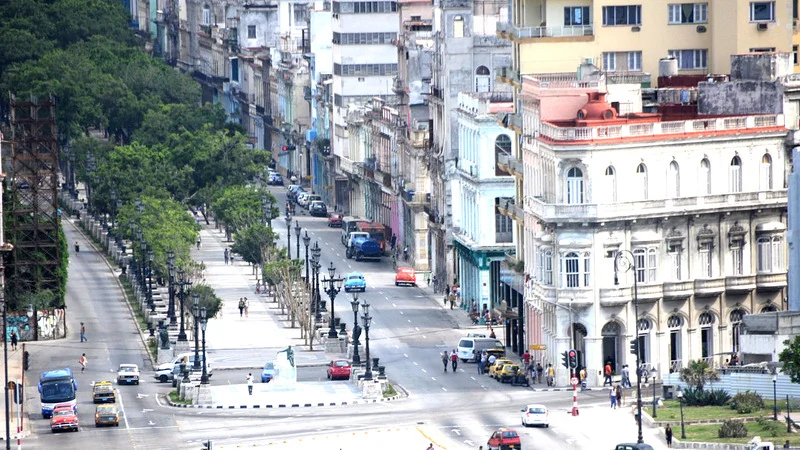
In the evening, you can:
- Enjoy live music at a local bar or club
- Attend a cabaret show at the world-famous Tropicana in the Miramar district
- Explore Plaza de la Revolución, one of the largest public squares in the world
- Walk down Paseo del Prado, the most picturesque boulevard in Havana
- See the real Havana by heading away from the tourist trail into the old Havana that many tourists don’t see
- Enjoy a live performance dinner show at Club Tropicana
Other things to note:
- Children playing soccer and baseball in the streets are a common sight
- Souvenir shops are common, but art and craft shops are found in most alleys and at the Art Market near the port
- English is widely spoken, making it easy to chat with locals
- Photographing people in costume requires a 1 CUC payment per photo
Havana offers a variety of accommodations, from luxury hotels to budget-friendly guesthouses and homestays. Choose the one that best suits your needs and preferences.
Day 2: Exploring Old Havana
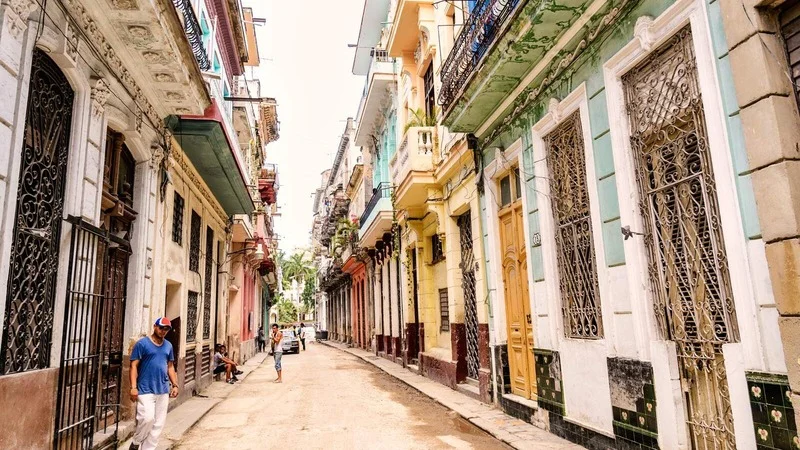
On the second day, Old Havana (Habana Vieja), a UNESCO World Heritage site, should be explored. This historic heart of the city features beautiful colonial architecture and cobblestone streets. The four main plazas to visit are:
- Plaza de la Catedral
- Plaza de Armas
- Plaza Vieja
- Plaza de San Francisco
Each plaza has its unique charm and attractions, such as historic buildings and museums. San Cristobal Cathedral, an 18th-century masterpiece of Cuban Baroque, is known for its stunning undulating facade and mismatched bell towers.
Other notable landmarks include El Capitolio, the National Capital Building, and the Grand Theatre of Havana, home to the Cuban National Ballet.
For a historical perspective, the Museo de la Revolucion, located between Habana Vieja and Centro Habana, provides a comprehensive overview of Fidel’s revolution.
Visitors can also enjoy panoramic views of the city from El Morro Fortress and Lighthouse and Fortaleza de San Carlos de la Cabaña. Personalized trips and activities, such as the Afrocuban Heritage and Regla Museum Tour and tasting a Habano cigar, can add depth to the Old Havana experience.
Day 3: Havana’s Arts and Nightlife

The Museum of the Revolution is visited for a glimpse into Cuba’s political history. Fusterlandia, a sprawling labyrinth of mosaic-covered streets created by Cuban artist José Fuster, is also explored.
Planning a 5-day Havana itinerary offers the perfect opportunity to immerse yourself in the vibrant music and dance scenes that define the city’s culture. Salsa and rumba aficionados will find themselves in paradise as they explore the lively nightlife, which usually kicks off around 10:00 PM and continues until the early hours of the morning, with clubs and bars bustling until 2:00 AM or 3:00 AM.
Dress codes are often enforced in Havana’s clubs, with many requiring dressier attire such as no shorts, singlets, or flip flops.
Some popular nightlife spots include:
- Bar Monserrate: Known for its central location, live septet, and neighborhood feel, attracting both tourists and locals.
- Café Bar Madrigal: A hip spot for Havana’s new economy.
- La Bodeguita del Medio: Famous for its mojitos and 1950s stars’ autographs.
- Fábrica de Arte Cubano: A thriving hub for the arts and nightlife, with DJs spinning records four nights a week until 3:00 AM.
- Salon Rosado de La Tropical: A lively outdoor salsa palace hosting big, crowded concerts.
- Tropicana: A world-famous cabaret known for its sultry, dance-packed, scantily-clad extravaganza.
- Café Teatro Bertol Brecht: A small theatre featuring Cuba’s contemporary music stars.
- Casa de la Música de Miramar: A big music and dance venue with Cuba’s top salsa and reggaeton bands.
- Jazz Club La Zorra y el Cuervo: An intimate basement club featuring top Cuban jazz performers.
- Gran Teatro de La Habana: Home to the world-famous Ballet Nacional de Cuba.
- Teatro Mella: Known for Cuba’s modern dance company, Danza Contemporánea de Cuba, and notable concerts.
- La Fabrica de Arte Cubana (FAC): A large industrial type venue in Vedado, featuring a unique mixture of art gallery, theater, cinema, dance, live music, restaurants, bars, shops, and more.
- Le Parisienne: A classy, upscale Havana nightclub located in the legendary Hotel Nacional.
- Yarini: An open-air roof top nightclub offering a fabulous bar, lite snacks, ample seating, and excellent acoustics.
- Ley Seca: A new venue featuring pulsating reggaeton music.
Other activities to enjoy include taking a full city tour in a 50’s convertible, visiting the Museum of Fine Arts, and enjoying a cafe in Havana.
The city’s vibrant arts and music scene reflect its rich cultural heritage, with influences from African, Spanish, and American cultures.
Day 4: Day Trip to Vinales Valley

A day trip to Vinales Valley from Havana is a full-day excursion that typically lasts around 12 hours. The journey to Vinales takes approximately 2.5 hours from Havana, offering scenic views of the Cuban countryside.
Transportation is usually provided by the tour company, often in the form of air-conditioned buses or private cars.
When planning your 5-day Havana itinerary, you’ll find that lunch is typically included in the tour price and consists of a traditional Cuban meal at a local restaurant.
The tour includes visits to various attractions such as:
- Tobacco plantation in the Vinales Valley
- Cueva del Indio (Indian Cave) with a boat ride
- Cuban cigar workshop
- Mural de la Prehistoria
- Los Jazmines lookout point
At the Vinales tobacco farm, visitors can learn about the traditional cigar-making process and try rolling their own cigars.
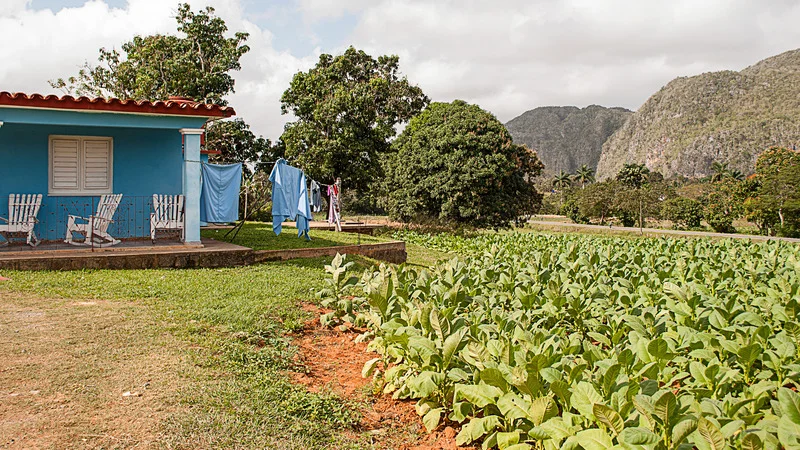
The price of the tour varies depending on the package chosen:
- Standard tour: US$ 72.30 per adult, US$ 46.40 for children between 2 and 12 years old, and free for children under 2 years old. Group size is limited to 12 people.
- Viñales Premium Supporting Cubans Tour: $95/person, which includes a visit to Arado Farm, horseback ride, visit to Cueva del Indio, and visit to Mural De La Prehistoria.
Free cancellation is available up to 36 hours before the service starts. Private tours with a guide and air-conditioned taxi pickup from your lodging in Havana city are also available.
Day 5: Beach Day at Playas del Este
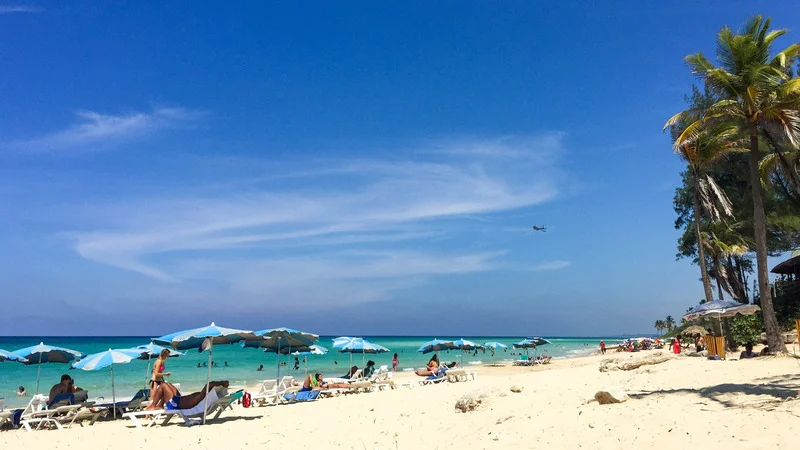
A day trip to Playas del Este, a collection of beaches located about 18-20 km east of Havana, is recommended for a relaxing beach experience.
The area boasts several unique beaches with golden sand and clear turquoise waters, perfect for swimming and water sports.
Some of the most popular beaches in Playas del Este include:
- Playa Santa Maria: One of the most beautiful and visited sections, with facilities like lounge chairs, shade umbrellas, tourist hotels, bars, water sports centers, and basic beachside restaurants.
- Playa Guanabo: A popular beach among locals and tourists, with a variety of restaurants and bars nearby.
- Playa Boca Ciega: A quieter beach with fewer facilities but still offering clear waters and soft sand.
To reach Playas del Este, several transportation options are available:
- Public bus line 400 goes to Guanabo, and you can get off at the right place for Santa Maria or walk along the beach for about 30 minutes to reach Santa Maria.
- Shared cabs leave from Parque de la Fraternidad to Guanabo, and from Guanabo, you can walk to Santa Maria or get off at Via Blanca and walk down the hill for about ten minutes.
- The tourist bus T3 departs from Parque Central and operates daily, making a stop at the La Cabaña fortress and costing 10 USD for a round trip.
When visiting Playas del Este, it is important to remember:
- The area can be crowded, especially on weekends.
- Sun protection, such as sunscreen, a hat, and sunglasses, is recommended due to the strong sun.
- Cuba requires travelers to have proof of a comprehensive travel insurance policy.
- The last T3 bus back to Havana departs at 6:00 PM and can be crowded.
Trying Havana’s Local Culture and Cuisines
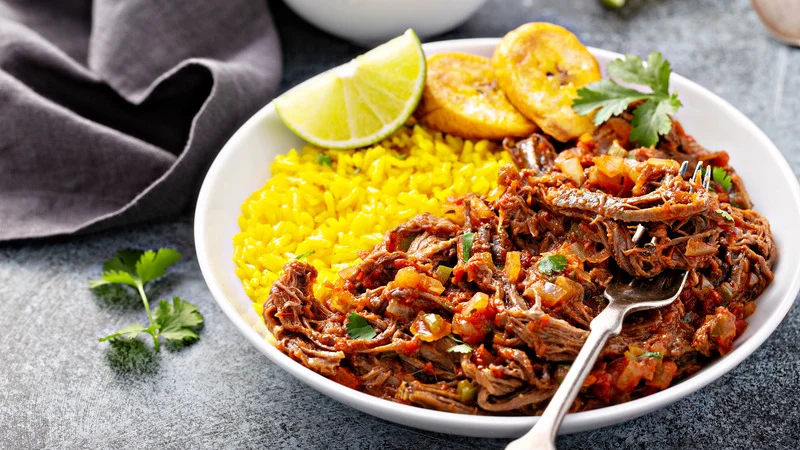
When you visit Havana, you will be immersed in a vibrant culture that is a blend of African, Spanish, and Caribbean influences.
The Cuban people are known for their warm hospitality and friendliness, making you feel welcome in their city.
One of the best ways to experience Havana’s culture is through its cuisine. Cuban cuisine is a delicious fusion of Spanish, African, and Caribbean flavors. Some popular dishes to try include:
- Cuban sandwich
- Ropa Vieja (shredded beef)
- Arroz con Pollo (rice with chicken)
- Lechon Asado (roasted pork)
- Ceviche (seafood dish)
- Grilled Octopus
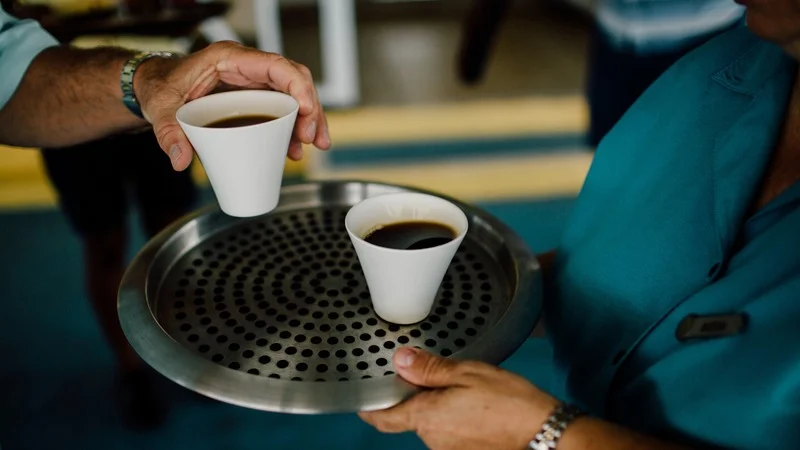
For dessert, indulge in treats featuring tropical fruits like guava, mango, and coconut. No trip to Havana is complete without trying Cuban coffee, renowned for its strong, rich flavor. Pair your meals with classic cocktails that originated in Havana, such as Daiquiris and Mojitos.
If you’re planning a 5-day Havana itinerary, dining out can be a delightful part of your experience. When exploring the local culinary scene, it’s important to be mindful of food safety practices and opt for reputable restaurants.
While some travelers have encountered food that didn’t meet their expectations, there are still numerous quality dining options to explore, including the delectable offerings at Hotel Nacional and La Barraca.
For an authentic taste of Cuba’s culinary heart, dine at a paladar, a family-owned restaurant serving traditional Cuban dishes, like La Guarida. Exploring Havana’s food scene is a delicious way to immerse yourself in the local culture.
Cultural Etiquette and Tips
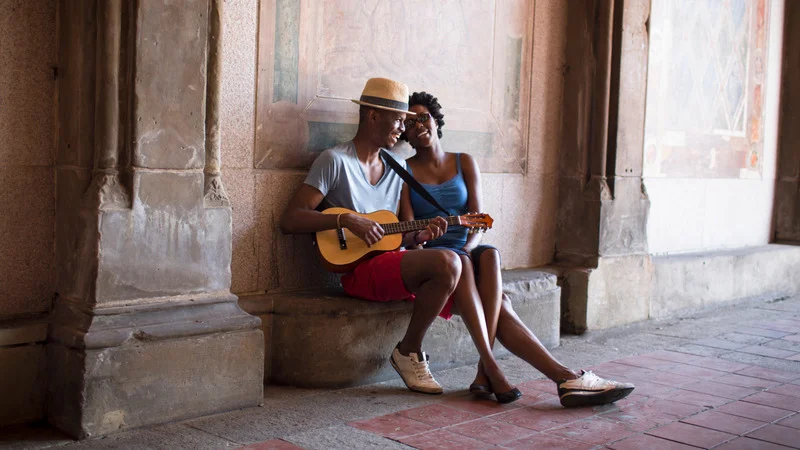
When visiting Havana, it is important to be mindful of the local customs and cultural norms to ensure a respectful and enjoyable experience. Here are some key tips to keep in mind:
- Greetings: Cubans are known for their warmth and friendliness. A simple “Hola” (Hello) or “Buenos días” (Good morning) can go a long way. Use “señor” or “señorita” when addressing locals.
- Dress Code: Casual attire is acceptable in most places, but it is advisable to dress smartly when visiting clubs, restaurants, or social events. Dress modestly and be respectful of religious sites.
- Language: Few Cubans speak English, so learning basic Spanish phrases such as “por favor” (please), “gracias” (thank you), “De nada” (you’re welcome), and “No” (no) will enhance your experience.
- Tipping: Service charges are common in restaurants and other services, but separate tips for servers are welcome based on the level of service. Stick to 10-15% even for low-cost items to avoid making people feel inferior.
- Money: Cuba operates with two official currencies: the Cuban convertible peso (CUC) and the Cuban peso (CUP). Tourists use CUCs for all goods and services. There is a 10% surcharge when exchanging U.S. dollars for CUCs. ATMs are scarce and unreliable for foreigners, so bring enough cash for your trip.
Other important considerations include:
- Staying hydrated and using sun protection
- Being open-minded and understanding cultural differences
- Asking permission before taking photos of people, especially those in uniforms
- Keeping an eye on your belongings and avoiding deserted streets at night
- Thanking your hosts and saying goodbye to everyone individually upon departure
By following these cultural etiquette tips, you will show respect for the Cuban people and their traditions, making your Havana experience more enriching and memorable.
Travel Safe and Secured
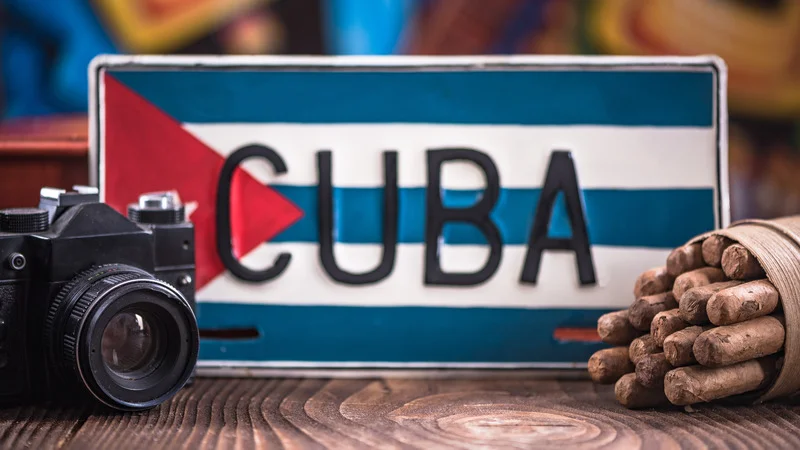
When traveling to Havana, it is important to be aware of your surroundings and take necessary precautions to ensure a safe and enjoyable trip.
The cost of living in Havana is generally lower than in many Western cities. However, visitors should still exercise standard precautions, such as:
- Staying alert and being aware of the threat of violent crime, including robbery and assault
- Keeping a close eye on valuables, especially during power outages
- Being cautious when using debit or credit cards to avoid overcharging and scams
- Avoiding running tabs and refraining from leaving your credit card with bar or restaurant staff
- Checking your bill to ensure accuracy
- Keeping the doors and windows at your accommodation locked
- Being wary of people who offer to help if your car is damaged
- Not picking up hitchhikers
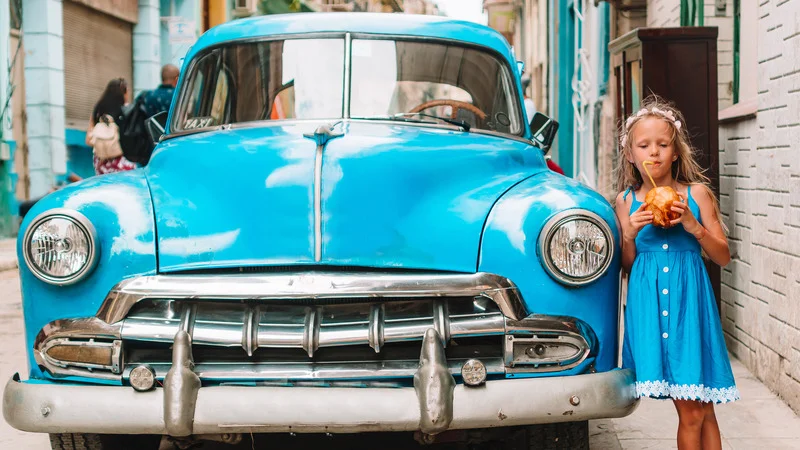
If you become a victim of crime or theft, it is important to get a written police report (Comprobante de Denuncia) from the Cuban police before you leave Cuba.
When planning your 5-day Havana itinerary, it’s essential to prioritize not only the exciting activities and sights but also your well-being.
Additionally, it is recommended to practice good hygiene and be mindful of local food safety during your trip to Havana. Furthermore, exercise caution when crossing roads and be aware of traffic and road safety to ensure a smooth and enjoyable exploration of the city.
To further ensure your safety, it is advised to enroll in the Smart Traveler Enrollment Program (STEP) to receive alerts and make it easier to locate you in an emergency. The U.S. Embassy in Havana can be reached at +(53) (7) 839-4100 for emergencies.
It is also recommended to follow the Department of State on Facebook and Twitter, review the Country Security Report for Cuba, and prepare a contingency plan for emergency situations.
The travel advisory level for Cuba is currently at Level 2: Exercise Increased Caution due to crime. Visitors should also avoid political demonstrations or protests, as they can turn violent.
Conclusion

Havana is a captivating destination that offers a unique blend of history, culture, and adventure. From exploring the iconic neighborhoods of Old Havana and Centro Havana to experiencing the vibrant arts and nightlife scene, a 5-day itinerary allows travelers to immerse themselves in the best of what this incredible city has to offer.
By following the detailed plan and helpful travel tips provided, first-time visitors can navigate the city with ease and create unforgettable memories.
To discover more comprehensive travel itineraries from different parts of the world, browse the rest of the website.
Whether you’re a seasoned traveler or embarking on your first international trip, Havana is a destination that will leave a lasting impression. With its rich history, warm hospitality, and vibrant culture, Havana is a city that truly captures the essence of Cuba.

